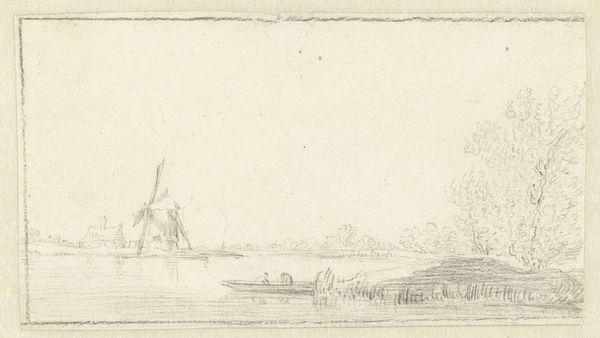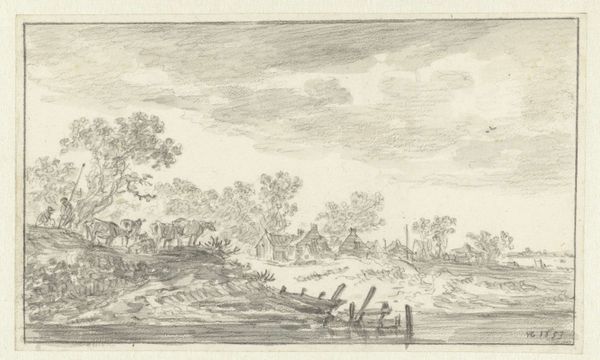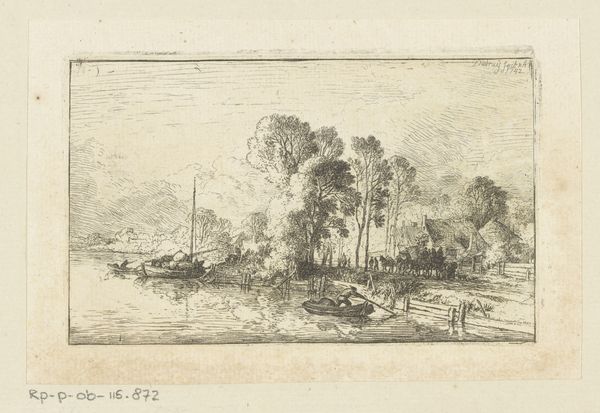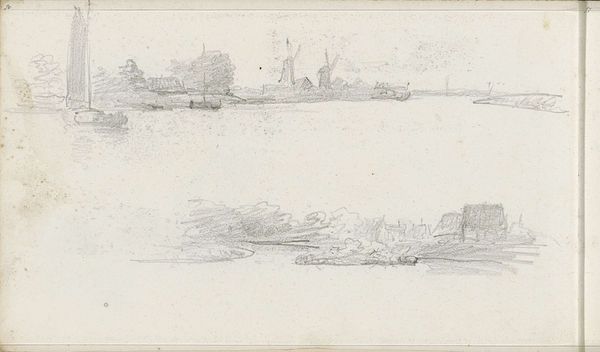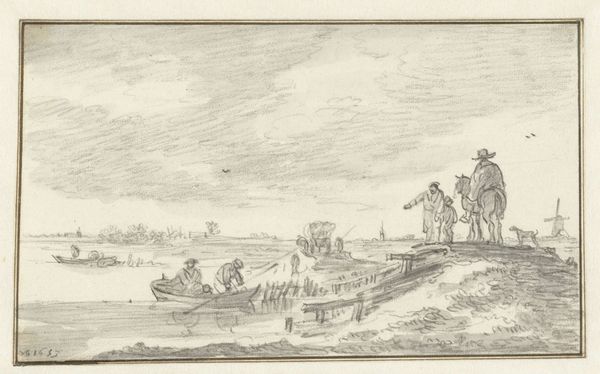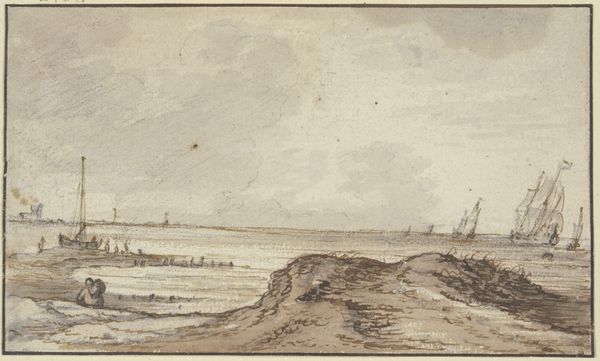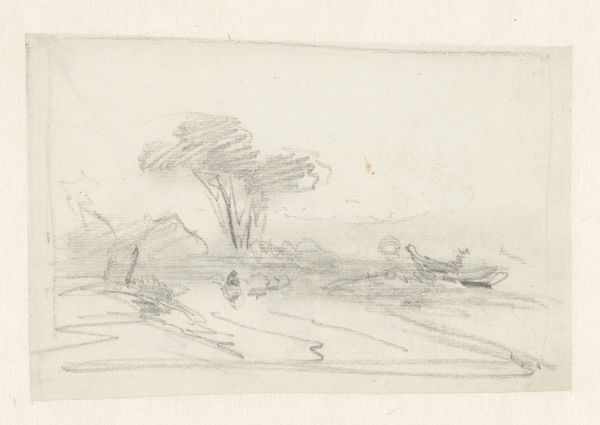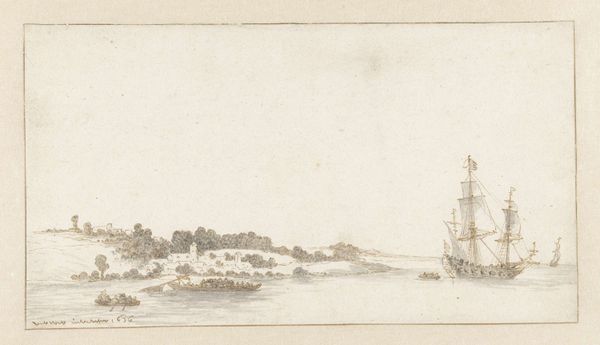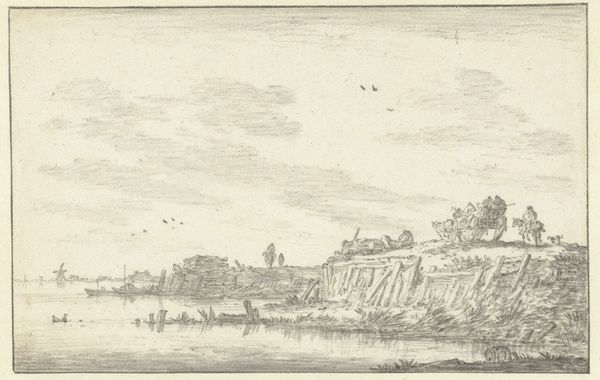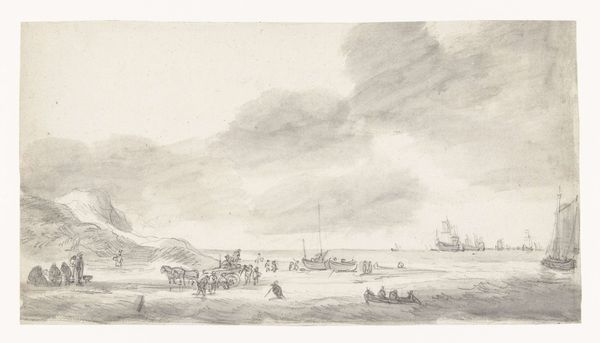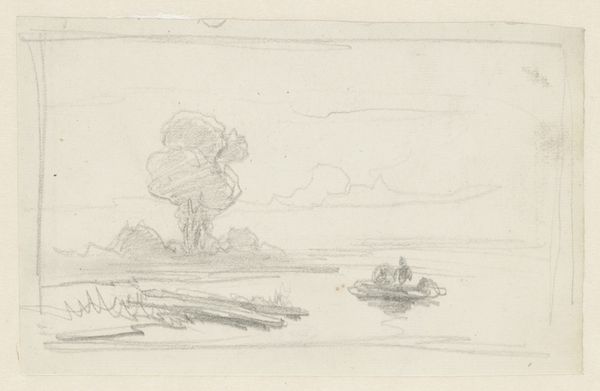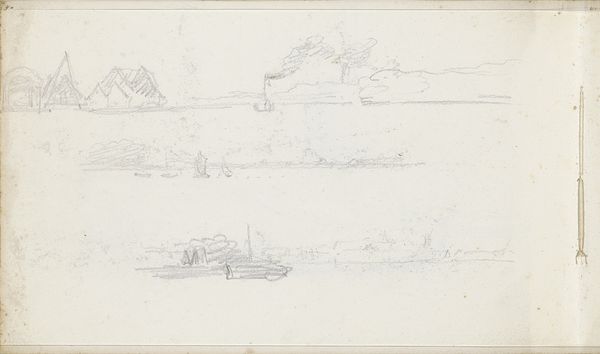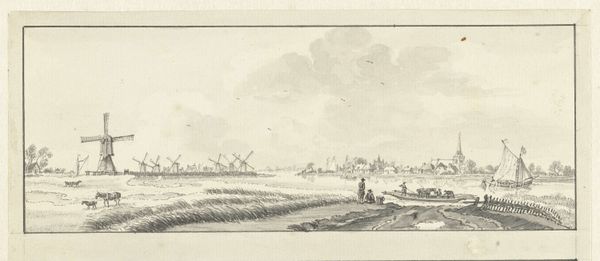
drawing, paper, pencil
#
drawing
#
aged paper
#
toned paper
#
light pencil work
#
pencil sketch
#
sketch book
#
landscape
#
paper
#
personal sketchbook
#
sketchwork
#
romanticism
#
pencil
#
sketchbook drawing
#
storyboard and sketchbook work
#
sketchbook art
#
realism
Dimensions: height 98 mm, width 128 mm
Copyright: Rijks Museum: Open Domain
Editor: This is Andreas Schelfhout's "Landschap met huis omringd door bomen aan het water," created sometime between 1797 and 1870. It's a pencil drawing on paper, currently held at the Rijksmuseum. There's something so gentle and ethereal about the landscape, like a half-remembered dream. How do you read its composition? Curator: Indeed. Note the artist's deft handling of the pencil. Observe how the interplay of light and shadow shapes the composition and renders depth, while the restrained use of line across the toned paper allows for a striking simplicity. Consider the balance between the textures within the landscape and the figures in the boat—what relationships emerge from your formal analysis? Editor: I see the way the soft pencil work creates different textures – the smooth water, the rougher trees. It’s less about specific detail and more about the overall effect. Is the lack of detail a conscious choice by the artist? Curator: Precisely! It compels the viewer to engage with the materiality of the drawing itself. This work foregrounds the intrinsic elements, rather than offering a window onto a realistic scene. Schelfhout masterfully employs the pencil not just as a tool of representation, but also as a generator of tonal values which serve to describe volume, creating atmosphere and guiding our view towards compositional harmonies. How does this subtle variation affect the viewers perception? Editor: So it's more about the artist's process and choices than a perfect rendering of a landscape. It is interesting to focus on just how the pencil strokes add depth, but I kept expecting details I know are usually added. Curator: Precisely. It invites us to appreciate the fundamental aspects of art creation – the structure, form, and texture achieved with rudimentary means. Editor: This was quite an enlightening departure from what I typically look for in art. Curator: Agreed, sometimes simplifying the means allows us to look at a work on its own terms.
Comments
No comments
Be the first to comment and join the conversation on the ultimate creative platform.
